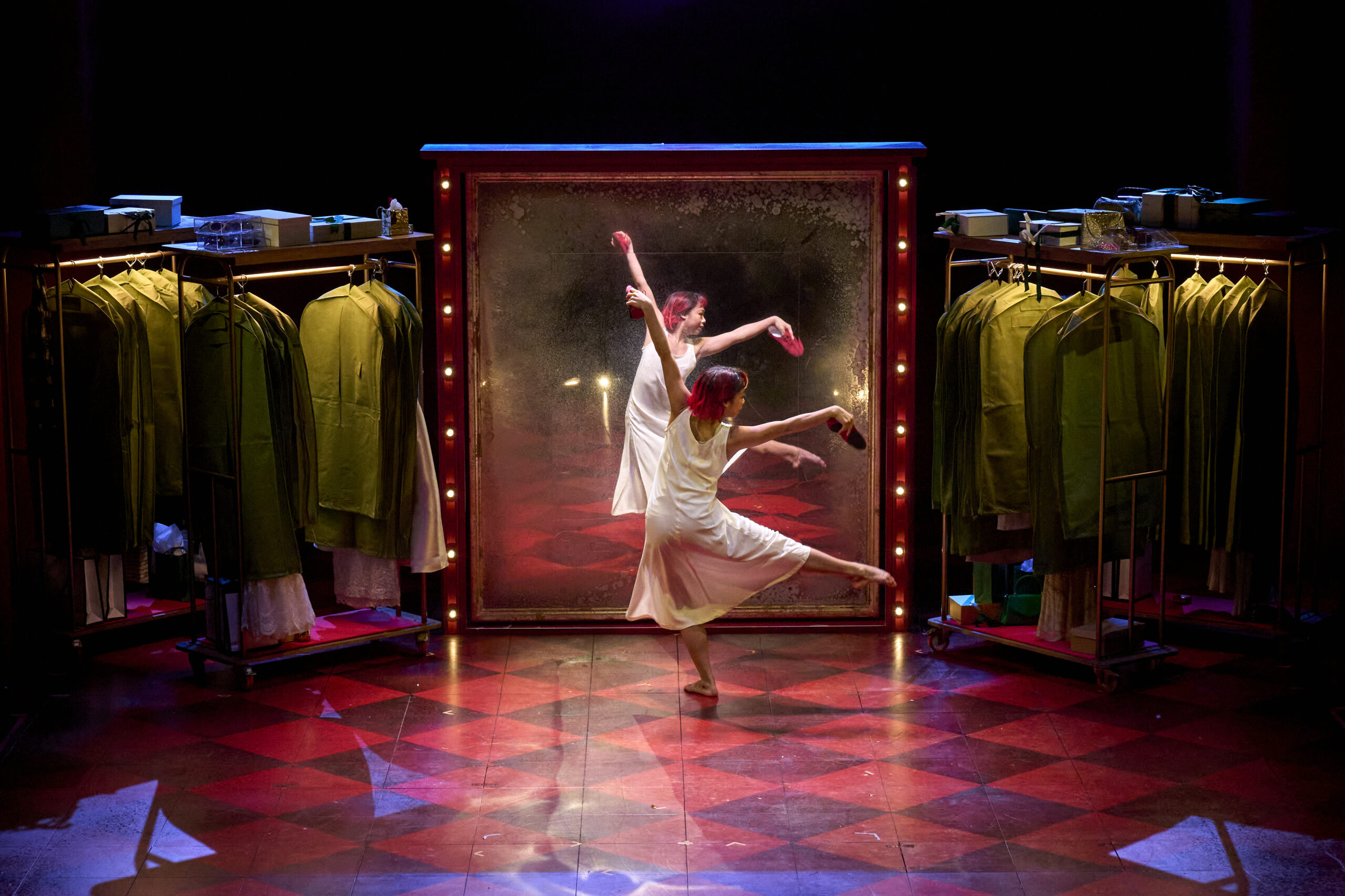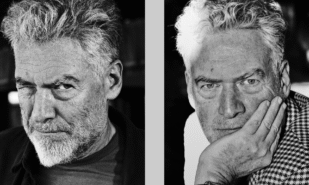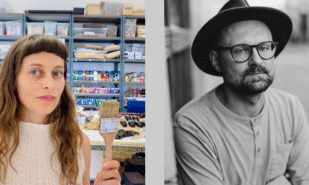Getting to Stratford-upon-Avon, the legendary town where Shakespeare was born and buried, from other cities in England is not always the easiest thing to do, especially during the autumn and winter months.
Royal Shakespeare Theatre: Shakespeare amidst vivid adaptations of Andersen’s fairy tale and a modern novel about a British teenager
Trains here are interchangeable, it takes about two and a half hours to get from London via Leamington Spa or Warwick, there is often no way to leave after 7:20pm, which means you have to stay in the town overnight or only come for a day trip. But that doesn’t stop tourists and theatre-goers – they often come here on special tour buses or in their own cars, and often stay in this affluent, expensive town for a few days to walk along the River Avon, visit the Church of the Holy Trinity – the place of Shakespeare’s baptism and later burial, the house, where he was born (the overly touristy place is now called the Shakespeare Birthday Trust) and a unique place to visit that reopened in 2016 – the ‘Shakespeare classroom’ at Stratford’s ancient King Edward’s School, which in Shakespeare’s time was part of Guildhall in Stratford and now still functions as a school with its own Guildhall Church.
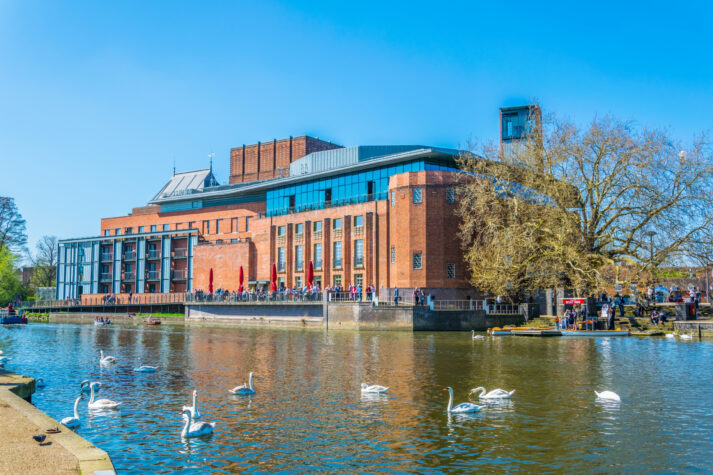
But Stratford is also home to a legendary venue, the Royal Shakespeare Theatre, founded in 1932 on the site of the Shakespeare Memorial Theatre, which burned down in a fire and had existed since 1879. Today it and the Swan Theatre, located here, are home to productions by the Royal Shakespeare Company. The Royal Shakespeare Theatre underwent a major refurbishment in the late 2000s and was inaugurated on 4 March 2011 by Queen Elizabeth II and Prince Philip. The Swan Theatre has also recently undergone a refurbishment, and reopened with a showing of Maggie O’Farrell’s play ‘Hamnet’ about Shakespeare’s son in 2023.
Both theatres are distinguished by their desire to recreate the setting of watching plays in Shakespeare’s time: the Royal Shakespeare Theatre has a far-reaching proscenium, allowing the audience to be seated on three sides around it; the Swan Theatre is more intimate, with wooden balconies and platforms, but has a far-reaching proscenium and follows the same stage layout as its larger counterpart, the Royal Shakespeare Theatre. In both theatres there is a sense of being very close to the actors, wherever you are in the theatre. The theatre has a good pricing policy of attracting young people and students, and there are regular discussions about the plays and meetings with the actors.
From June 2023, the Royal Shakespeare Company has for the first time introduced a duo of theatre makers (Daniel Evans and Tamara Harvey) with previous experience in regional theatres and major festivals as its Co-Artistic Directors. Daniel Evans ran the Sheffield Theatre for seven years and the Chichester Festival for another seven years until 2023. Tamara Harvey gained theatre experience in the USA and Shakespeare’s Globe Theatre, and was Head of Clywd Theatre in Wales for eight years until 2023. In the last two seasons, the Royal Shakespeare Company has been distinguished by its active performance in off-site venues so that not only Stratford residents and visitors can see the plays. For example, the 2024 Autumn/Winter season has included stage adaptations of ‘The Buddha of Suburbia’, based on the novel by Hanif Kureishi and directed by Emma Rice, at London’s Barbican Theatre, and the successful RSC production of ‘A Midsummer Night’s Dream’ is coming soon. RSC’s productions can also be seen in Chicago and London’s West End (for example, the musical Matilda has been running here for many years).
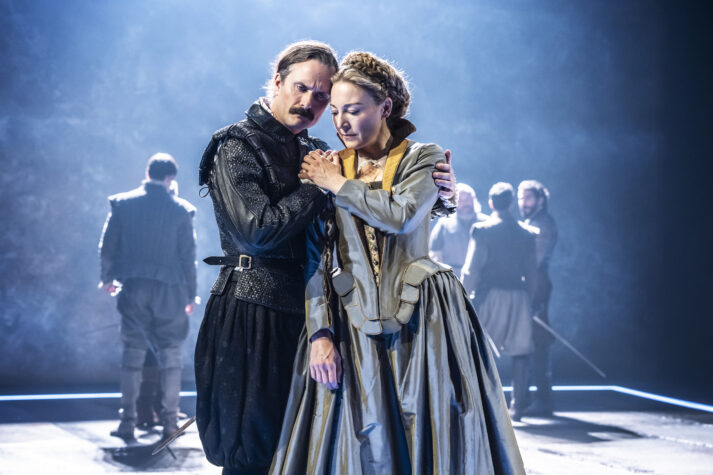
The Royal Shakespeare Company is also distinguished by its clear focus on modernity, renewal and inclusion in its repertoire of contemporary plays and adaptations of prose works – thus, not only Shakespeare is performed in Stratford and London, but also plays by Christopher Marlowe, Sarah Kane, Joe Murphy and Joe Robertson, Nancy Harris and others. The theatre’s openness to experimentation and new playwrights is striking and rewarding – the most exciting productions of the 2024 Autumn/Winter season have been these new texts – Swan Theatre’s production of Nancy Harris’s The Red Shoes (a loose version of Andersen’s fairy tale) and Emma Rice and Hanif Kureishi’s adaptation of Kureishi’s novel The Buddha of Suburbia, which was a resounding success with London audiences. The third production of the autumn/winter season was Shakespeare’s Othello, directed by Tim Carroll, which played at the Royal Shakespeare Theatre to a low-key reception.
Let us begin our review of Stratford’s three productions with the ambiguous and dry Othello. Tim Carroll’s production draws attention to itself by an unusual bias in the solution of the artistic space and costumes (the artist is Judith Bowden), which was reflected in the inconsistencies of the acting, which differed in style (historical and modern) from one actor to another. It seems that the director never decided whether his ‘Othello’ would be a modern interpretation of the classic or faithful to the original conservative treatment of the play. In this ‘Othello’ there is only a very interesting and original set design – illuminated strips (either made of plastic or plexiglass) falling down to the stage from above, which form a special square space either directly on the stage or in the area of its backdrop, and are illuminated with ghostly, deep light (lighting designer – Paul Constable).
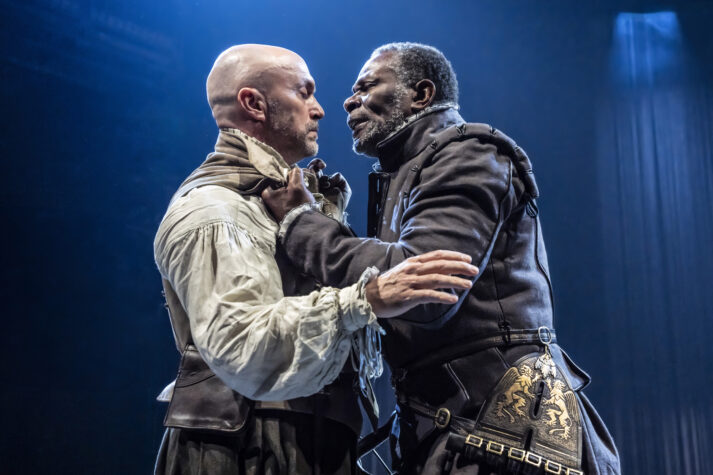
There are some very interesting ideas in these strips, and an attempt to make the production non-Shakespearean psychological and contemporary. When they move towards the backdrop, it is in their parallelepiped that Othello’s fantasies of what Desdemona might be doing unfold – we see her ‘affair with Cassio’ in the form of silhouettes, which is great, as jealousy comes to us not only in Othello’s words, but objectified in the form of his dreams and visions. At the end, this square descending from the sky is the space for those who gradually pass into the next world – Desdemona, a little later Emilia, and at the end – Othello himself. And this is also a very interesting solution – we see that in this posthumous square Othello and Desdemona still love each other, and Shakespeare’s play becomes not a hopeless tragedy, but only a wave of suffering and misunderstandings between the loving couple, whose happiness has been hindered by too many people and obstacles.
The musical accompaniment of the production is also very refined, in keeping with its minimalist style and completely empty proscenium – it is beautiful melodies in the style of Gregorian chant (composer – James Oxley, sung backstage by three singers – the teno Oxley himself, as well as baritone Samuel Pantcheff and bass Alex Jones). But a very strange and incomprehensible skew emerges in the acting style and costumes of the actors. Costume designer Judith Bowden uses pseudo-historical costumes with a huge military sabre for Othello (the actor seems to get burdened by it by the end), with roundish trousers for the men, and elaborate dresses, corsets and hairstyles for the women. Incidentally, Desdemona takes a very long time to undress before the strangulation scene, and the whole historicity of the costumes seems to work only once – right here, as preparation for sleep equals a long preparation for death.
This choice is completely unjustified, and seems like an unnecessary addition to the production or a tribute to Stratford and tradition that makes no one feel better. The actors are bifurcated in their choice of acting style – if the magnificent black actor John Douglas Thompson as Othello, with his emphasised recitation and somewhat forced facial expressions, seems like a good actor from the days of BBC films based on Shakespeare’s plays, then Will Keen as Iago, on the contrary, is so modern that he seems to be playing a Netflix series – his passages (especially the monologues in which he analyses his actions in detail) are subtle and psychological, but sometimes, when he turns sideways or with his back to the audience, are simply hard to hear. Many of the actors, including Edward Hogg as Cassio and Jethro Skinner as Rodrigo, are frankly farcical in their roles without ever reaching the tragic subtlety of the main characters. But Juliet Rylance is very good as Desdemona, and manages to find a balance between modernity and historicity, and to show the stability and steadfastness of light, kindness and love, which her heroine is filled with even after death.
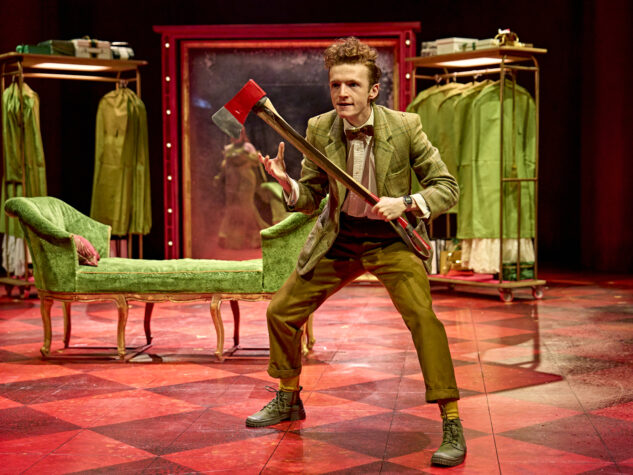
‘The Red Shoes,’ a play by Nancy Harris that is a very loose adaptation of Hans-Christian Andersen’s fairy tale (actually a new play based on it) is clearly planned by the theatre as a Christmas and New Year’s Eve production. But the humour of the play is so openly black at times, reminiscent of the best traditions of Martin McDonagh (and the latter, by the way, has a whole play about Andersen), that you wonder whether you should bring your children to it. But on the whole, Harris seems to have revealed our favourite storyteller’s (and along with him the Grimm brothers) penchant for a very original symbiosis of outright horror with tenderness, lyricism and kindness. In the plot of ‘The Red Shoes’ a wealthy couple consisting of Mariella (Dianne Pilkington), Bob (James Doherty) and their strange son Clive (Joseph Edwards) take in an orphan Karen, who has always really wanted to dance, as their adopted daughters. Making her theatre debut as Karen is dancer Nikki Cheung, for whom this is her first professional acting job. The family has a maid, Mags (Sakuntala Ramanee), who in many ways replaces the girl’s mother, but is also the unwitting cause of the tragedy that occurs at the end – Clive, who has a passion for animal butchery and taxidermy, cuts off both of Karen’s arms and hands when she returns from the Prince’s ball and forgets to care for Mags.
Karen has both of her feet (and this very stagey, shadow theatre style episode is the main reason not to take children to the show). There is also a magician, the shoe-maker Sylvester, who tricks Karen into taking the red shoes that call her to be herself and to defy her family – he is superbly played by actor Sebastien Torkia (who is also a priest and head of the orphanage). The text plays very cleverly with modern and fairytale realities at the same time – there is a talking mirror in the play, which causes the head of the family Mariella’s jealousy towards Karen, and a prince looking for his Cinderella holding her red shoes (while she no longer has legs to try if they fit), and a lost road in the forest, and many, many other things recognisable to the audience and referring to their childhood memories.But the direction and choreography by Kimberley Rampersad, as well as the costumes and scenic design by Colin Richmond (everything gravitates towards red and black colours, against which the garish green costumes of the host and hostess stand out), as well as the lighting (lighting designer – Ryan Day) and music (composer – Mark Teitler), together with a very tough, whip-smart, funny and grotesque text by Nancy Harris make the play incredibly modern, original, scary and funny at the same time. Perhaps the elements of obvious morality (the girl without legs still dances in her red shoes) seem far-fetched and superfluous, but the premiere turned out to be bright, with its own individual fairy-tale and scary style, memorable for everyone.
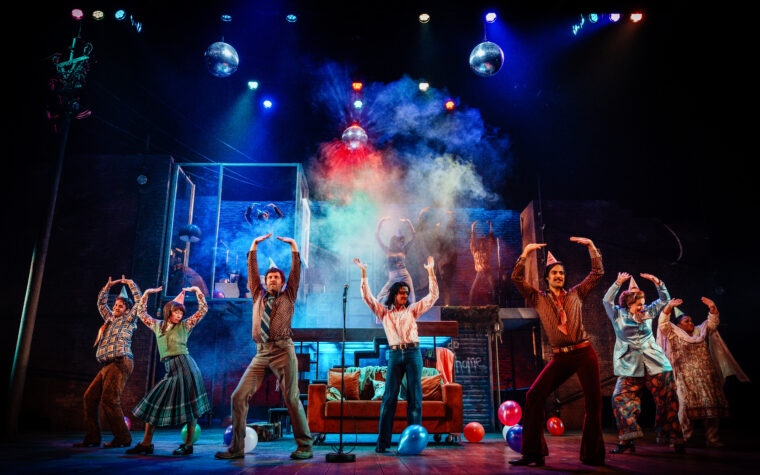
The most successful of the Stratford performances, in my opinion, was Emma Rice’s ‘The Buddha of Suburbia’ – an adaptation (made by the director herself together with the writer) of the novel by the British writer of Pakistani origin Hanif Kureishi, which is partly based on the events of the writer’s young years and became a real hit in 1990. This production is being shown in London, at the Barbican Theatre, and such applause and enthusiasm has not been seen here for a long time. Kureishi is known as the author of several rather provocative novels, in which he openly deals with the themes of sexual relationships, human formation through overcoming prejudices and restrictions associated with the age and status of his characters. But ‘The Buddha of Suburbia’, although it also has these elements, turns out to be very coherent and funny thanks to the sparkling youthfulness that reeks from the actions of its funny and recognisable in its maximalism characters – first of all, our narrator Karim (a truly stellar debut by Dee Ahluwalia).
The story is set in a suburb of London (most likely Bromley, where the writer himself grew up) in the 1970s, and the production reeks of the youth and maximalism of England itself in those years – there is music by Freddie Mercury and references to protests and demonstrations, graffiti and double deckers appear on Simon Baker’s video projections, Karim and his entourage wear clashing jeans and hippie-like clothes, and are interested in yoga, alcohol, theatre, books, love and each other – in other words, life! In Emma Rice’s production there is Karim’s family (his Pakistani father goes to another woman and his mother finds a new partner, his aunt and uncle and cousin, whose house has become a shelter for him), and a theatre company (even two – one amateur, the other professional) in which young Karim tries his hand, there is also his new girlfriend (interestingly, actress Katy Owen plays both Karim’s mother and girlfriend at the same time). And all this multitudinousness is organised by the director from a small group of actors playing two or three or four roles in the play, and their changes are another reason to find new meanings in the text and laugh (for example, Matthew Pike’s despot director, played by Evan Wardrop, suddenly becomes a quiet boyfriend from the provinces).
This is a very inventive, colourful production with music by Neeraj Chang and great acting – apart from debutant Ahluwalia, who becomes a swan from an ugly duckling and blossoms into a star before our eyes, Ankur Bahl’s work as his father Haroon, and of course the two roles of Katy Owen as Karim’s prim and quiet mum and Ellie, a girl from an elite family with her own quirks who seeks adventure but is as delicate and gentle as the main character’s mother. This production was an excellent end to the autumn/winter season for the Royal Shakespeare Company, which showed that it is ready to go beyond the usual and try its hand not only at Shakespeare’s legacy, but also at new texts, bold adaptations that are in tune with Shakespeare’s spirit, youth, originality and the ability to speak theatrically and vividly to the audience about what they are really interested in.

